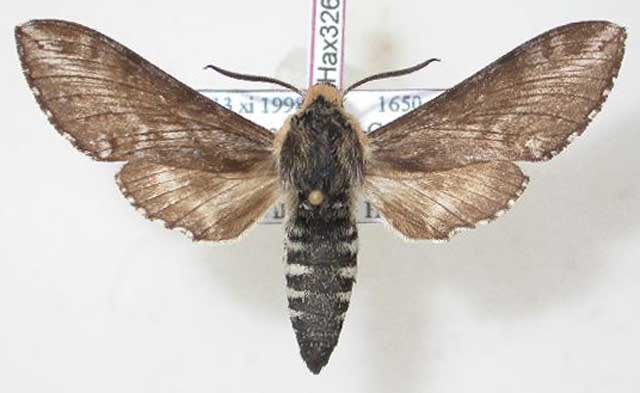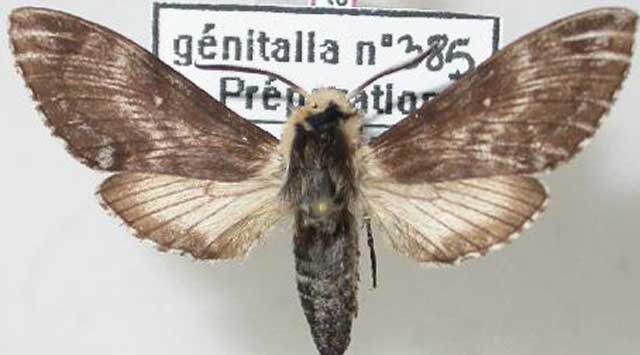Neogene corumbensis
(B.P. Clark, 1922)

Neogene corumbensis ?male?, 46mm, courtesy of Jean Haxaire.
This site has been created by Bill Oehlke.
Comments, suggestions and/or additional information are welcomed by Bill.
TAXONOMY:
Family: Sphingidae, Latreille, 1802
Subfamily: Sphinginae, Latreille, 1802
Tribe: Sphingini, Latreille, 1802
Genus: Neogene Rothschild & Jordan, 1903 ...........
Species: dynaeus corumbensis B. P. Clark, 1922
|
DISTRIBUTION:
Neogene corumbensis
(Wing span: 43-46mm) flies in central Brazil: Para, Goias, Mato Grosso, Mato Grosso do Sul and Bolivia in cerrado or scattered forest biome. It is very similar to
Neogene dynaeus and was at one time considered a subspecies of dynaeus which flies in more densely forested areas.
I believe the holotype is probably from Corumba, Mato Grosso do Sul.
Original description from Corumba, Mato Grosso: "This form has the white occipital band of A T . dynaeus, but it is cream-colored, not brilliant white.
The ground tone of both wings, above and beneath, is brown, where N. dynaeus is gray. The abdomen also is brown, where N. dynaeus is black.
The hind wing of the male is not white, as in N. dynaeus, but is uniform brown above and beneath. The white markings of
the fore wing above, so distinct in N. dynaeus, are in this form almost entirely lacking. It is a singularly unicolorous insect
throughout."

Neogene corumbensis ?female?, 43mm, courtesy of Jean Haxaire.
FLIGHT TIMES:
Neogene corumbensis adults fly in November. There are probably additional flight months.
ECLOSION:
Pupae probably wiggle to surface from subterranean chambers just prior to eclosion.
SCENTING AND MATING:
Females call in the males with a pheromone released from a gland at the tip of the
abdomen. Adults probably nectar at a variety of flowers.
EGGS, LARVAE, PUPAE:
Larvae feed on
Return to U.S.A. Table
Return to Sphingidae Index
Return to Sphingini Tribe

